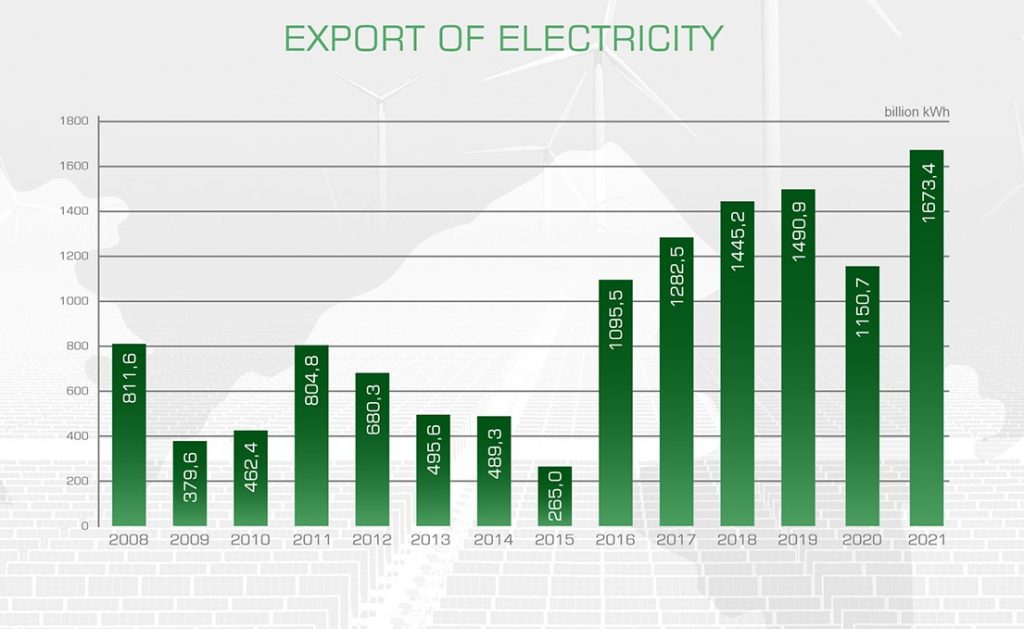
Black Sea Energy Submarine Cable – New Transit Role of Georgia and Sustainability of the Middle Corridor
By Nika Chitadze, Professor of the International Black Sea University Director of the Center for International Studies President of the George C. Marshall Alumni Union, Georgia – International and Security Research Center.
The third decade of the 21st century, along with other global events and changes, is remarkable in terms of energy. The global cataclysms and the ongoing war on the European continent have particularly highlighted the political and ecological importance of energy. Despite the vital challenges, Europe is firmly committed to the policy of the Green Energy Agreement and the way to combat climate change.
The reduction of fossil fuels was already a priority of the environmental policy, which was not only changed after the start of the war by Russia but also the sanctions introduced against the aggressor were added. Sanctions mostly apply to energy carriers, which Russia has been using as political leverage for many years. The created situation showed us that Europe needs reliable corridors for the import of the same products along with the production of green energy. This situation opens completely new opportunities for several countries, among which Georgia occupies a key place – Georgia, which is an important link of the middle corridor.
Georgia itself is part of the European Green Agreement. In addition, the country implements several reforms according to the requirements of the association agreement and the European perspective, which are also designed for climate change and imply the introduction of the European standard. In addition to harmonization with Europe at the legislative and political level, Georgia itself needs to increase the volume of electricity generation, which should be achieved with its natural resources, i.e. renewable energy.
As a result of such a development path, the demand for qualified, technological, and engineering personnel, and energy and environment specialists is increasing in the country. The demand for highly paid and high-tech specialists is increasing. There is an opportunity for the energy sector to become an example of sustainable and self-sufficient development and flesh out the full production cycle from generating facilities on local resources to the production and delivery of end-use products. The emergence of a similar prerequisite from the energy point of view creates an immediate demand for proper education and training of highly paid personnel.
Another advantage in the field of energy is competitiveness. The policy of the European market regarding the priority of green energy, the imposition of a carbon tax, and steps aimed at encouraging renewable resources make Georgia competitive as a country producing green and renewable energy. The country can generate, consume and export green energy. Products made with green energy enter the European market without additional tax, which increases its price competitiveness. Together, all prerequisites contribute to the transformation of Georgia into an energy hub, which increases the country’s energy independence and security.
Energy independence is a dream state for any country in the world, however, no country can meet all the criteria for full energy independence. Despite this, countries are trying their best to achieve more independence, diversify risks, and stable energy production, trade, and transportation. Efforts in the mentioned directions lead to the concept of energy security.
Energy security, which implies the reliable and continuous supply of various types of quality energy at an affordable price to all consumers of the country, protecting the interests of national security and sustainable development, in the short, medium, and long term, is achieved by reducing supply risks and external dependence, diversifying energy resources, supply sources and routes and By increasing the reliability of the energy system. This process is closely related to increasing energy efficiency, the development of local fossil and renewable energy sources, strategic reserves, energy system flexibility, and energy markets.
In the conditions of scarcity of fossil heating resources, renewable energy sources are the main means of increasing the energy security of Georgia. Georgia’s renewable energy sources represent an energy potential of national and regional importance, which is an important resource for energy security, development, cooperation, and climate change mitigation. The sustainable energy supply of the country requires complex and effective utilization of renewable energy resources in the country.
In 2021, the production of electricity in Georgia amounted to 12,645-kilowatt hours, the main part of which is produced at hydroelectric plants. As a whole, the maximum potential of Georgia’s hydropower resource is estimated at 150 billion kilowatt hours per year.
We should understand that today the energy policy of developed countries is considered in the context of climate change. The European Green Deal (EU Green Deal) is a new initiative of the European Union, the goal of which is to make Europe the first carbon-neutral continent in 2050. The intermediate target is to reduce greenhouse gas emissions by 55% compared to 1990 by 2030. And until 2050, full carbon neutrality should be achieved, that is, the rate of net emission of greenhouse gases should be equal to zero. According to the plan approved in 2022, by 2030, 45% of the total energy consumed in the EU should come from renewable energy sources.
This means that the demand for green energy, on-site production, and import will increase more and more in Europe shortly. Laying the electricity transmission cable stretched on the bottom of the Black Sea opens up completely new opportunities for Georgia.
Black Sea power cable and its importance
The Black Sea power cable, the green energy production possibilities, the production of quotas stipulated by the Kyoto Protocol, and the natural potential of the country are highly attractive factors for investors. Georgia will seriously strengthen the function of the energy corridor, and it will turn from a fossil fuel transit country into an additional electricity-producing and transmitting country. All these factors will strengthen the energy security of the country and its independence.
How did the Black Sea electric cable project start and what stages did it go through – “the war factor accelerated the processes”
The idea of the Black Sea electric cable project came to “Gross Energy Group” back in 2017. However, at that time there was a little skepticism on the part of Europe because they could get energy resources from other, alternative sources. Nevertheless, work on the project continued for years, and already after the war in Ukraine put the world in front of new challenges, its implementation was accelerated.

Source: https://bm.ge/en/article/eu-to-invest-eur-23-bln-for-black-sea-submarine-electricity-cable—oliver-varhelyi/122518
As is known, Georgia, Romania, Azerbaijan, and Hungary have signed a memorandum of understanding, which envisages the construction of a new energy cable on the bottom of the Black Sea and will enable the integration of the South Caucasus with the European system.
The estimated cost of the project is 2.3 billion euros. In addition, Georgia will finance the study of the Black Sea bottom for cable construction with 20 million dollars.
With the mentioned project, Georgia becomes a supplier of electricity to Europe, which means that the country will already politically be part of the EU space.
This project presents an alternative source to connect the South Caucasus region with Europe, and the price of electricity in the latter is 3 times higher.
Georgia receives a 75 million dollar loan from the World Bank for the Black Sea cable project
Detailed research, the geophysical and geotechnical study of the Black Sea bottom was on the agenda for the implementation of the Black Sea underwater power line project. In this direction, today, the issue of allocating 75 million dollars as a loan from the World Bank to Georgia is on the agenda.
It is worth noting the fact that investing in the Black Sea submarine cable has started. Georgia has already spent two and a half million euros on this project, which involves the so-called studying of the feasibility stage. At this stage, it is already on the agenda to carry out detailed research, the geophysical and geotechnical study of the bottom of the Black Sea for the implementation of the project of the Black Sea underwater power line. Funding in the amount of 75 million US dollars will be allocated in three directions, this is the geophysical and geotechnical study of the Black Sea bed, which will cost approximately 20 million US dollars and will be spent by Georgia, as well as for the strengthening of the land transmission line, which already directly implies the establishment of relevant infrastructure on the territory of Georgia. Strengthening of the transmission lines to fully realize the mentioned project from the side of Georgia. Also, 5 million euros will be allocated for consulting, both in legal and financial matters.
How much does Azerbaijan produce and how much electricity does it export?
The project is indeed a huge opportunity for Georgia and the prospect of connecting with the European family, but at this stage, Azerbaijan is considered the main export country. That is why it is important to consider the energy potential of Azerbaijan. Let’s start with electricity generation. Electricity production in the country is growing almost every year. For example, according to the Ministry of Energy of Azerbaijan, 27.8 billion kWh of electricity was generated in 2021, which is 7.9% more than last year’s figure of 25.8 billion kWh and is a historical maximum.
EU countries to purchase electricity from Azerbaijan through Black Sea submarine cable

Source: https://dtt-net.com/eu-countries-to-purchase-electricity-from-azerbaijan-through-black-sea-submarine-cable/
Azerbaijan is distinguished from other countries in the region not only by its abundant reserves of natural gas, and it is not surprising that gas has the largest share in electricity generation. In 2021, thermal power plants accounted for 26.2 billion kWh of the total electricity produced, which was 94.2% of the total output. The remaining 5.8% came from renewable energies.
According to the Ministry of Energy of Azerbaijan, the total power generation capacity in Azerbaijan is 7,542.2 MW. As for renewable energies, the total capacity of this type of power plant, including large hydropower plants, is 1,304.5 MW, which is 17.3% of the total capacity.
There are a total of 30 hydroelectric power stations in the country (10 large and 20 small), with a capacity of 1,154.8 megawatts. The number of wind stations is 7, the capacity is 66.1 megawatts, and the capacity of 12 solar power plants is 45.9 megawatts.
In 2021, the export of electricity reached a record level and amounted to 1.7 billion kWh, which is 45.4% more than the figure for 2021.
Export of electricity from Azerbaijan in 2008-2021, data of the Ministry of Energy (billion kWh):

Source: https://commersant.ge/ge/post/ramdens-awarmoebs-da-ramdeni-eleqtroenergia-gaaqvs-eqsportze-azerbaidjans
For information, by the Paris Agreement of 2015, Azerbaijan plans to reduce carbon emissions by 35% by 2030, and by 40% by 2050. To achieve this, the country will increase the installed capacity of renewable energies in the country’s energy balance to 30%. In total, renewable energy capacity should increase by 1,500 megawatts by the end of the decade.
According to the calculations of the Ministry of Energy, the potential of renewable energies in the country is up to 27,000 megawatts, of which 23,000 are solar energy, 3,000 megawatts are wind energy, 380 megawatts are bioenergy, and 520 megawatts come from mountain rivers.
For comparison, in 2021, 12.6 billion kWh of electricity will be produced in Georgia, which is 13.3% more than the figure of the previous year. The largest share – 80.5% of the output was generated by hydroelectric plants, 18.8% was generated by thermal plants, and the rest 0.7% was generated by wind power plants.
Conclusion
In general, as for the Black Sea submarine cable project, it envisages the arrangement of an underwater high-voltage transmission network, which should connect the electrical energy systems of Georgia and Europe. According to European Commissioner Oliver Varhey, the estimated cost of the project is 2.3 billion euros.
If the project is implemented, a cable with a capacity of 1,000 MW and a length of 1,195 kilometers (1,100 km – underwater, and 95 km on land) will be connected from Georgia to Romania, which will allow the countries of the South Caucasus and Romania to take advantage of the expanded export opportunities and take into account the hourly prices of the electricity market. trading.
The implementation of the project will help to strengthen the energy security of Europe and the South Caucasus region, the development of the renewable energy sector, and increase the transit opportunities between the mentioned regions.





